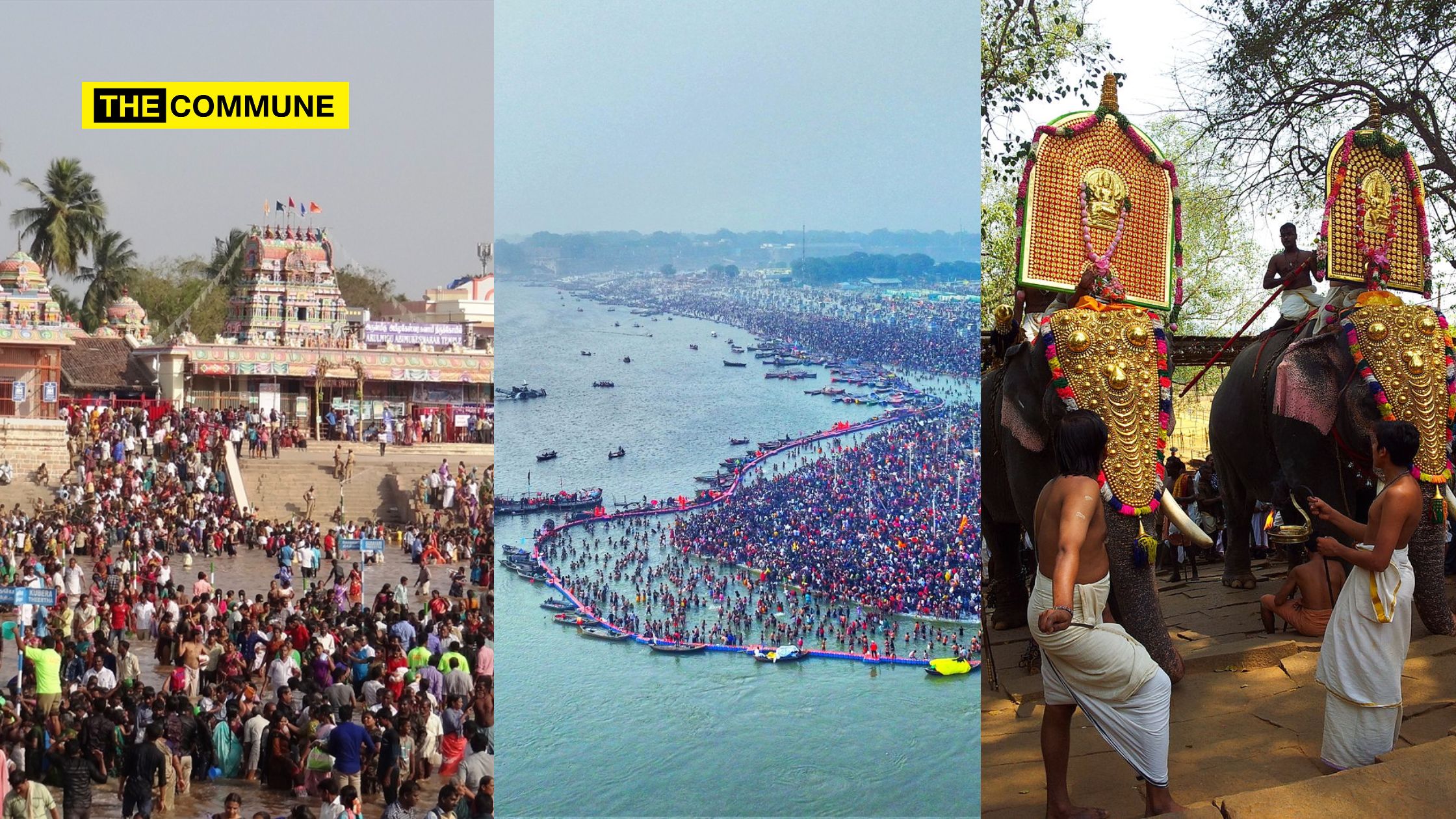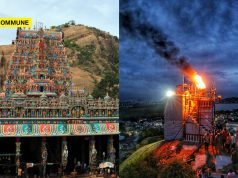
The festivals of Maha Kumbh Mela, Mahamaham, and Mamankam hold immense significance in the religious and cultural life of India. Despite being culturally same and geographically distinct, these festivals share a profound spiritual connection through their underlying themes of ritual purification, cosmic alignment, and devotion to sacred waters. Both Maha Kumbh Mela and Mahamaham attract millions of devotees, saints, and pilgrims, symbolizing a collective quest for spiritual liberation and divine grace.
Maha Kumbh Mela is one of the largest religious gatherings in the world, held every twelve years at four different locations in India—Prayagraj, Haridwar, Ujjain, and Nashik. The festival’s origins are rooted in Hindu traditions, particularly the legend of the Samudra Manthan (churning of the ocean) and the struggle between gods and demons for the nectar of immortality (amrita). During this struggle, a few drops of the nectar fell at these four locations, making them sacred sites. The primary ritual of Maha Kumbh Mela involves taking a holy dip in the sacred rivers—the Ganges at Prayagraj and Haridwar, the Godavari at Nashik, and the Shipra at Ujjain. Bathing in these rivers during the Kumbh Mela is believed to cleanse one of all sins and help in attaining moksha (liberation from the cycle of birth and death). The festival also acts as a venue for philosophical discussions, spiritual discourses, and religious congregations.
Mahamaham is a prominent festival celebrated once every twelve years in the town of Kumbakonam, Tamil Nadu. The festival is centered around the Mahamaham tank, a large temple tank where nine sacred rivers are believed to converge. According to legend, Lord Shiva appeared in Kumbakonam to purify the waters after a cosmic deluge. Devotees believe that bathing in the Mahamaham tank during the festival absolves them of their sins and grants spiritual merit. The festival involves elaborate rituals, including ceremonial bathing, processions of temple deities, and various religious ceremonies. It attracts pilgrims from across southern India, creating a vibrant spiritual atmosphere that reflects the region’s rich cultural heritage.
Mamankam was a historic river festival held on the banks of the Bharathapuzha River in Kerala , probably the only river named after the name of the country. It was celebrated once every twelve years in the ancient kingdom of Valluvanad and initially had religious significance, centered around the worship of deities and ritual bathing in the river. Over time, it evolved into a platform for political rivalry and power struggles. The Zamorin of Calicut played a key role in these events, as warriors from different clans participated in ritual combat to challenge the Zamorin’s authority. Despite its political dimensions, Mamankam retained its spiritual essence, symbolizing the sanctity of the Bharathapuzha River and the importance of ritual purification. Today, Mamankam is remembered for its unique blend of religious devotion and historical significance.
Despite their regional differences, Maha Kumbh Mela, Mahamaham, and Mamankam share several common aspects that highlight their eternal connection. All these festivals revolve around the sanctity of water bodies, emphasizing the purifying power of water in Hindu philosophy. The act of bathing in the rivers during these festivals is seen as a means of spiritual cleansing and renewal. The timing of Maha Kumbh Mela and Mahamaham is determined by precise astronomical calculations. The Maha Kumbh Mela occurs when Jupiter enters Aquarius and the Sun enters Aries, while Mahamaham is celebrated when Jupiter transits the zodiac sign of Leo. Although Mamankam does not follow such astronomical rules, it reflects a similar spiritual connection with the river and cosmic order.
These festivals are believed to offer devotees an opportunity to attain moksha. The rituals performed during these events aim to help devotees transcend worldly existence and achieve spiritual freedom. Maha Kumbh Mela, Mahamaham, and Mamankam act as major pilgrimage events that bring together diverse communities from across the country. They promote a sense of unity and shared spiritual purpose, highlighting the inclusive nature of Hindu traditions.
River festivals like Maha Kumbh Mela, Mahamaham, and Mamankam play an important role in the spiritual and cultural life of India. Rivers are revered in in prayers as living deities, symbolizing life, fertility, and purity. These festivals celebrate the sacredness of rivers and strengthen the ecological and spiritual relationship between humans and nature. River festivals provide an opportunity for collective worship and reflection, encouraging a sense of community and shared values. They also contribute to the preservation of religious traditions and the transmission of cultural knowledge across generations. The economic impact of these festivals is significant, as they boost local economies through tourism and related activities.
The eternal connection between Maha Kumbh Mela, Mahamaham, and Mamankam lies in their shared emphasis on sacred waters, cosmic alignment, and spiritual liberation. These festivals exemplify the profound spiritual heritage of India and continue to inspire millions of devotees in their quest for divine grace and enlightenment.
Vishnu Achutha Menon is an Assistant Professor at the Institute for Educational and Developmental Studies.
Sandeep Kumar P serves as the Director of the Centre for South Indian Studies.
Subscribe to our channels on Telegram, WhatsApp, and Instagram and get the best stories of the day delivered to you personally.




